You would have already made many cold calls with mixed results as a salesperson. Sometimes, it could be a simple personality clash with a new client. You may even have gotten some bad sales scripts that didn’t work.
Or, you may need help to get past gatekeepers and reach the actual decision-makers. Rejections can often be hard to handle too. Salespeople simply cannot afford to get discouraged by it.

After the pandemic in 2020, the sales process has become virtual more than ever before, posing new challenges for even the most seasoned sales reps.
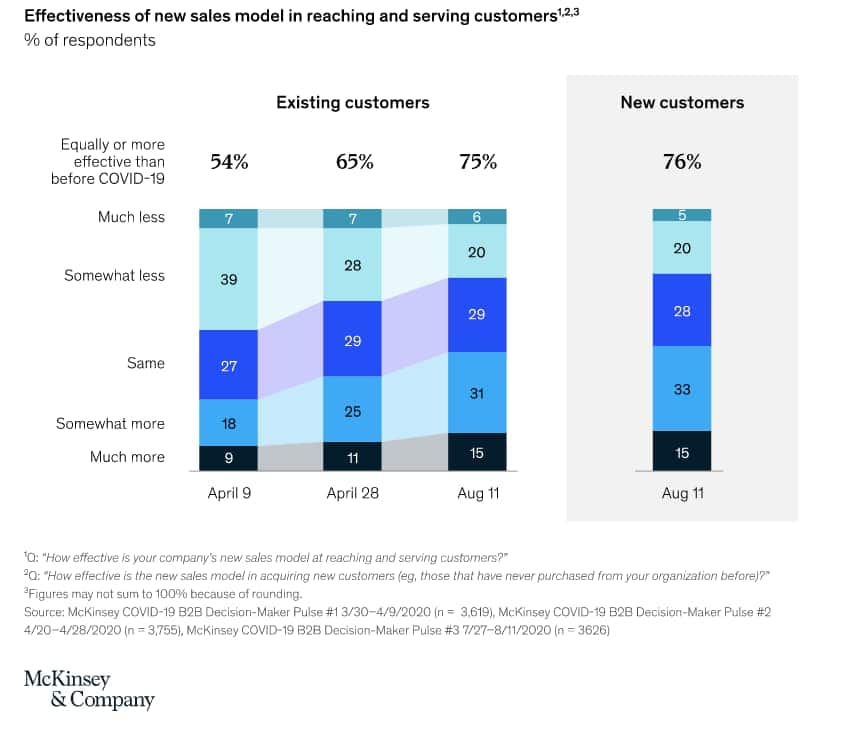
If you’re struggling with any of these real challenges, then we hope this article is a helping hand. In this detailed article, we cover:
- A detailed definition of a sales script
- When you could use sales scripts
- The many benefits of using a sales script
- 7 simple steps to create your own sales scripts
- 12 sales scripts for inbound and outbound leads
- 3 best practices to nail sales calls
If this is what you were looking for, read on!
Table of Contents
What Is a Sales Script?
Sales reps and tele-callers are no strangers to sales scripts.
A sales script is a set of pre-written dialogues, talking points, strategies, and conversation starters used by sales reps.
We’ve all been the victim of a bad sales script at some point in our lives. These calls are boring at best and extremely annoying at worst. But, a good sales script can help you warm up even the most recalcitrant of leads. That’s a huge difference, right?
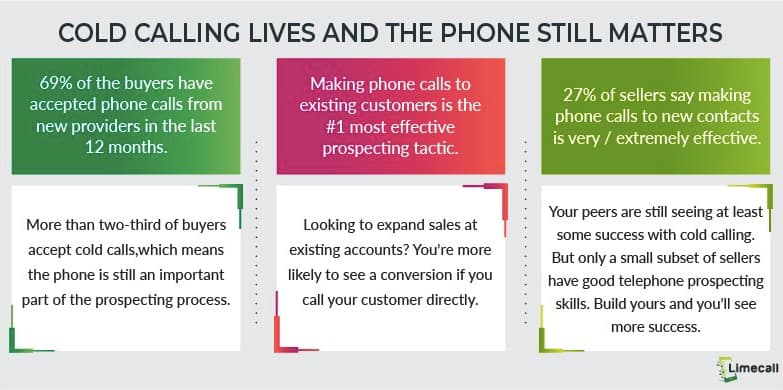
How and When Can You Use Sales Scripts?
Nobody will appreciate you for simply reading off a script. You’ll sound very robotic, rigid, and, quite frankly, inexperienced. So, don’t read your script verbatim to the prospect. No, this isn’t what we’re suggesting.
A sales script can become a clear roadmap to get your conversation moving in a favorable direction. This doesn’t mean that a deal is closed immediately. But if you move the needle an inch forward with each call — you’ll have a lot to celebrate at the end of the month.
You can use sales scripts for a wide variety of situations that sales reps face daily. The more creative you can get with your scripts, the better your results will be.
According to Salesforce, 85% of customers are dissatisfied with their on-the-phone experience! If you can nail this step, it will help you stand out from competitors.
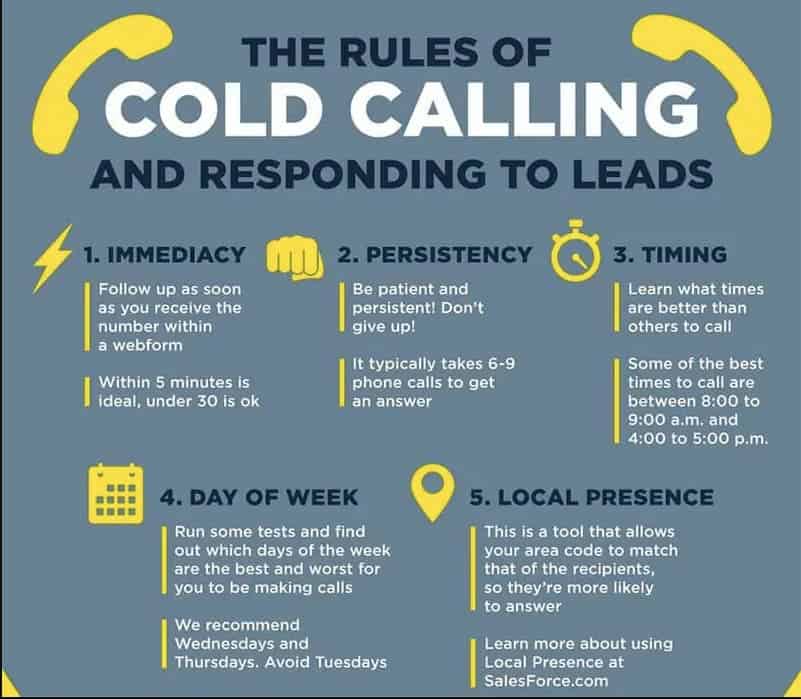
Here’s a word of caution, though. Having a bad sales script can hurt your company more than having no sales scripts. Let’s see why it could be worth your time.
Read also: Cold Call Script Templates and Tips To Help You Close More Deals
How Can Sales Scripts Benefit Your Team?
We’re talking about good sales scripts here. Here are the many ways a sales script can help your company and your sales team:
- A consistent customer experience: According to Salesforce, 92% of all customer interactions still happen over the phone. With such a large number of calls, a good sales script can help you provide consistent customer experience across the board.
- Saves time and individual effort: According to studies, 96% of sales reps give up after four attempts. But 60% of sales only happen after the sixth call! Sales scripts will help your reps expect a level of rejection, especially when written into the sales script. Also, your sales reps won’t have to spend hours noting down their talking points. Rather, it comes from a team effort.
- Improves focus and simplicity: A good sales script will help you narrow down your major talking points. Especially if you’re in B2B sales, there may be fifty features that can solve customer pain points. But, a sales script will help you narrow it down and customize it to the customer on call.
- Consistent improvement: Once your reps use sales scripts, then it becomes to calculate the conversion rates. You can also troubleshoot what’s working and what’s not. This will allow you to make continuous improvements to your existing sales scripts.
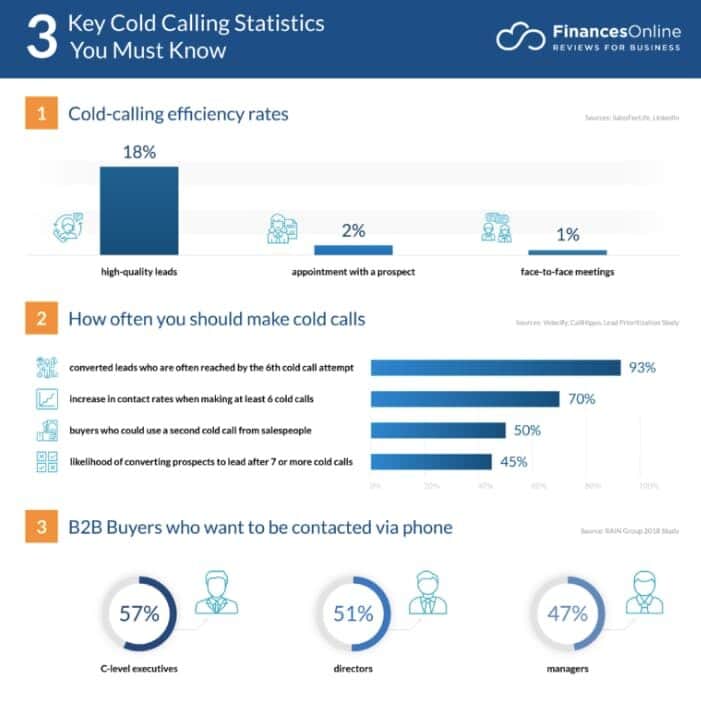
7 Simple Steps To Create Your Own Sales Scripts
Before we give you some examples of good sales scripts, we want to empower you to write sales scripts yourself. It’s not rocket science, but it’s not easy either.
Follow these seven simple steps to create stunning sales scripts that boost conversions.
1. Learn everything possible about your customers and target audience
The first step may sound a bit boring, but it’s crucial nonetheless.
You need to do your homework about your target audience, their interests, and their pain points. A customer relationship management (CRM) system like EngageBay would help you accomplish this.
According to surveys, 42% of sales reps feel they don’t have enough information before making a call. That’s close to half of all sales reps! By getting only this first step right, you’re setting yourself up to beat your competition. Here’s the data on the most popular ways to gather customer data among B2B companies 👇
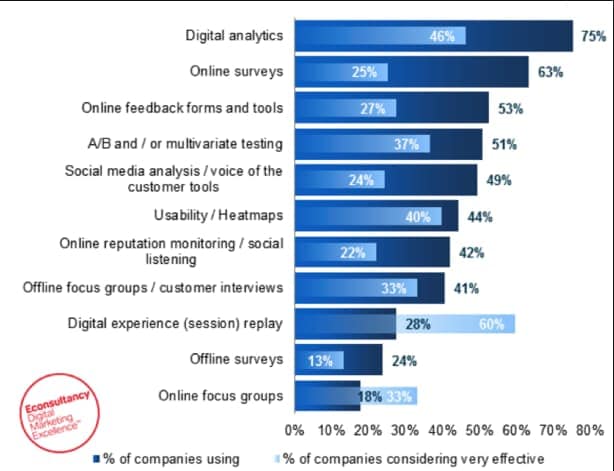
2. Narrow your focus to one product or service at a time
Both B2C and B2B companies can take this advice to heart. Once you have your ideal customer profiles (ICPs) and understand customer pain points, then it’s time to conduct a product analysis.
This has to be a team effort. Get the data on your top-selling products, popular features, and a clear value proposition. Your customer pain points can show you how your product might resolve them.
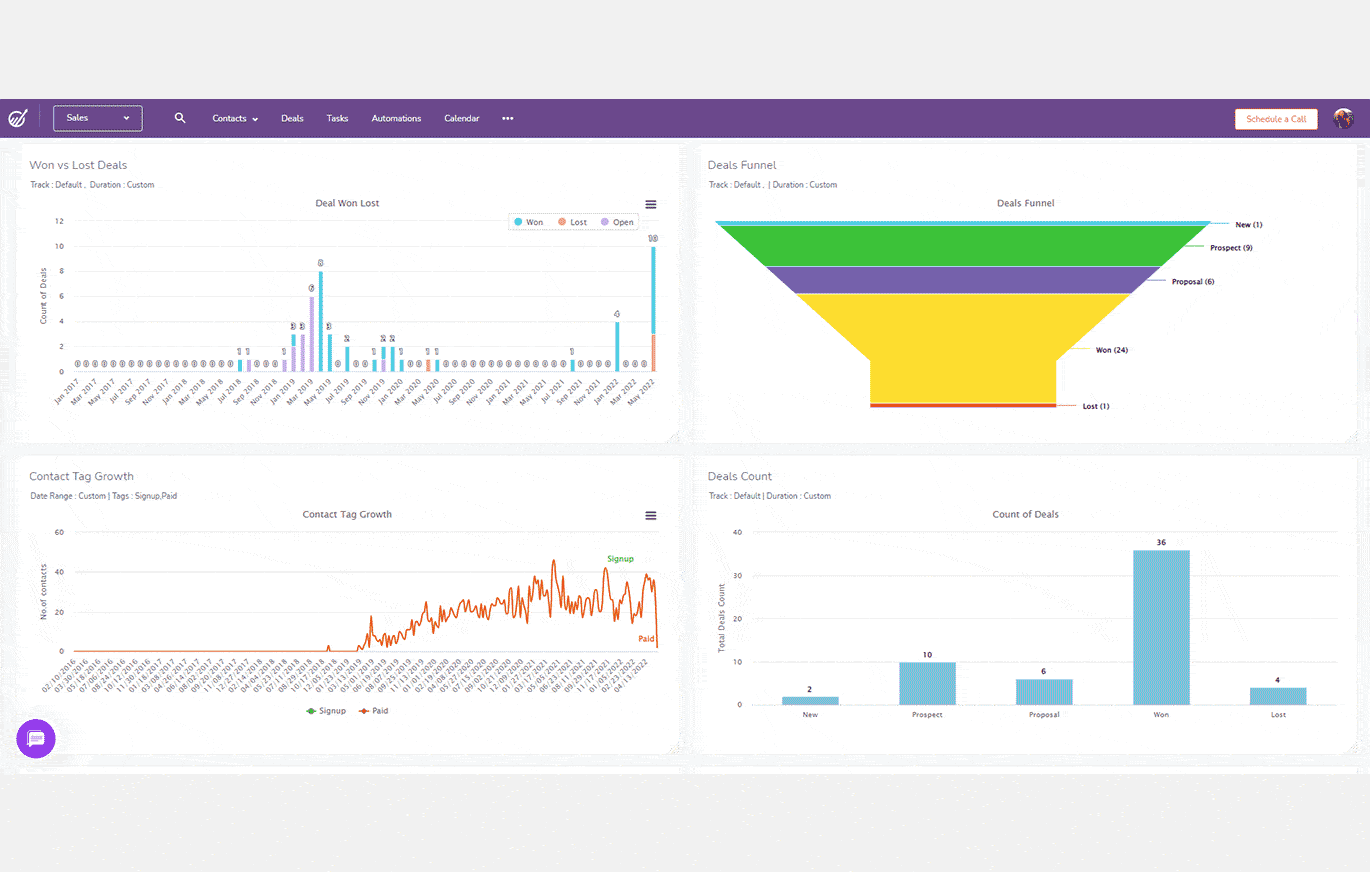
We also recommend analyzing the latest data on sales trends, market trends, market demand for your product niche, profitability, and competitor analysis. This will refine your talking points and hone in on top-performing products.
Read also: 6 Ways To Make Practically Every Sales Call Close
3. Identify customer pain points and highlight the product’s value
You’ll understand the major customer pain points if you’ve done your research correctly. Think about it this way.
If your customer had no pain point, why are they even talking to you?
Even a simple keyword search can get you the most common pain points in your industry. But we also recommend conducting surveys and directly asking customers about their pain points. This is crucial because there’s a general mismatch between a brand’s perception of pain points and actual customer pain points.
You can see this here 👇
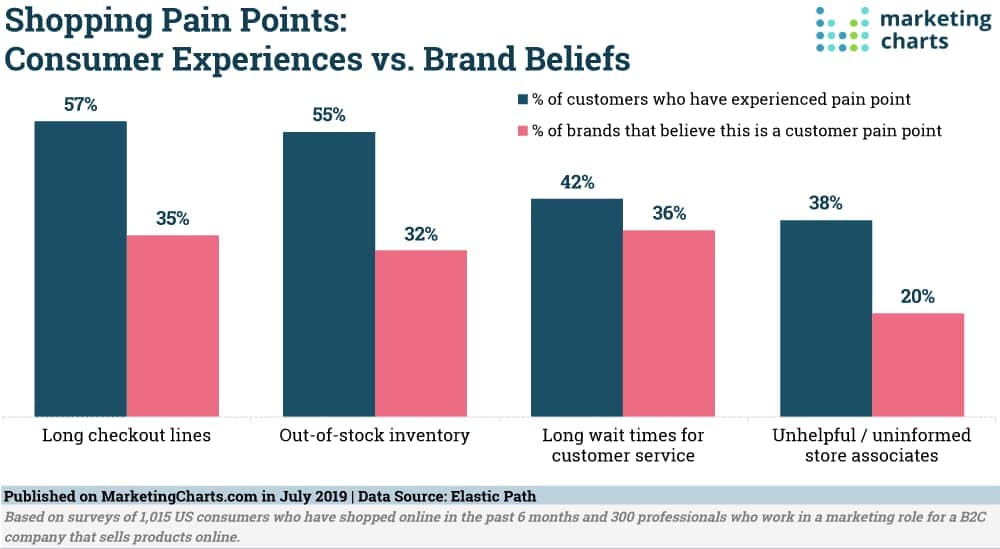
There are four kinds of pain points. Then, the most crucial action here is linking the benefits of your products to your customer pain points.
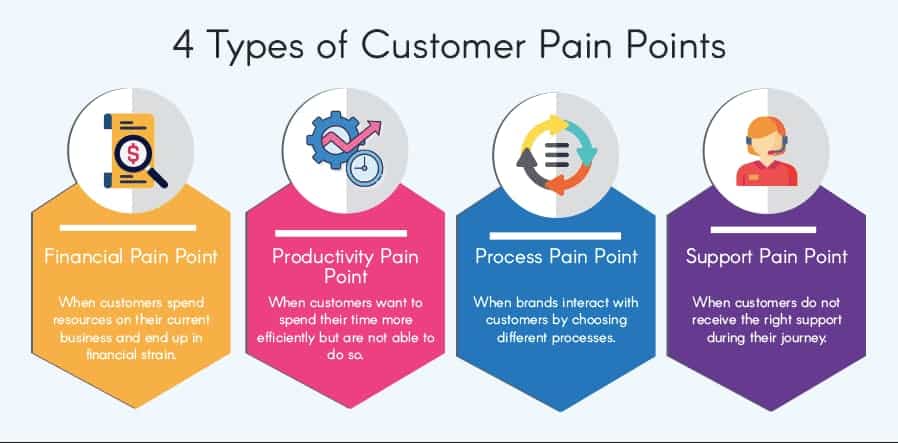
4. Start with a friendly introduction and ask questions
First impressions do matter. A good introduction aims to hold the prospect’s attention and give them context. So, begin with your name and the company you work for. Here’s an example:
“Hello, I’m Jane from EngageBay. I’m calling to check if you’re still interested in an integrated marketing, sales, and customer service solution.”
Follow this introduction with a question about the customer’s major pain points. Here’s how:
“I’ve been in touch with many industry leaders regarding inefficient analytics and reporting in CRM systems. Is this an issue you face as well?”
This way, you are seen as an experienced player offering genuine solutions. You want to avoid being seen as a pushy salesperson.
Read also: How Sales Call Recording Can Improve Your Pitch
5. Win at the language games!
The kind of language you use can make or break your sales call. No, we’re not exaggerating.
Grammatical errors or poor sentence construction will prove damaging to your reputation. This is a no-brainer.
But there’s a lot more to this step.
A team of researchers studied real-life sales scripts from different companies. They identified six crucial aspects of language that lead to a higher conversion rate.
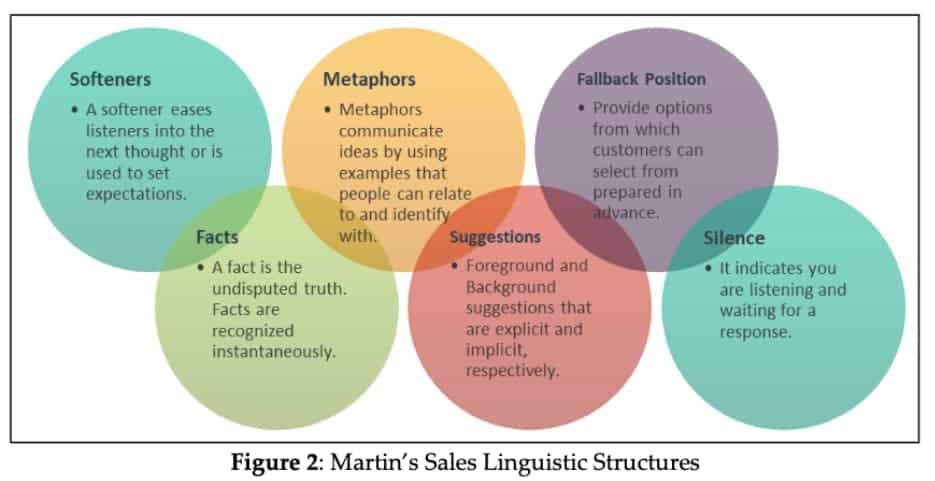
Each one of these components is equally important for a good sales script.
The researchers also found that ‘suggestions’ and ‘silence’ both allow a sales rep to gain the upper hand during a sales call. This means you need to strike a balance between the two.
Silence indicates that the sales rep is an active and empathetic listener. It gets the prospect talking more, creating more inroads for you to solve their pain points.
Create a balanced use of statistics (facts) coupled with metaphors or a narrative. This way, you’re viewed as knowledgeable and relatable at the same time.
6. End your script with a call to action
If you end a call with no clear follow-up plan, it leaves the deal hanging. Persistence is key here.
This step is simple when you know the objective of your call. How?
We’re glad you asked. Your goal isn’t a conversion for every call, right? Your goal could be as simple as scheduling a second sales call for the following week. So, end the call by making the next step clear.
Here’s another tip. Your point of view doesn’t matter as much as your prospect’s POV. What do we mean by this? Take a look at the following questions:
1. “Is this CRM solution something you would be interested in?”
2. “How many people work in your sales and marketing teams? Do you think you could achieve better alignment with a shared dashboard?”
The first question is like a pop quiz, right? It’s easy to say no to that.
But the second question is open-ended. If the prospect indicates that a shared dashboard might help, you have a chance to build a conversation on that point and schedule a follow-up call or a demo.
Read also: How Sales Call Recording Helps Build an Effective Sales Team
7. Consider implementing ‘cognitive selling scripts’ to improve this process
It’s not a shocker to any of us that we must continually improve and streamline our sales script writing process. What if I told you there’s an empirical way to do this?
The ‘cognitive sales script’ theory was first published in the ’80s by a marketing professor named Thomas Leigh. It pretty much went unnoticed until recently. It started gaining popularity due to its simplicity and ease.
We all know that there are few high-performing sales reps in every company. These reps repeatedly knock it out of the park. And they make it look really easy.
Nobody, including researchers, is entirely sure why some sales reps are successful while others are not, given the same sales training modules. There are too many variables that make conducting controlled studies difficult.
A cognitive selling script asks these high-performing reps to note down every tiny detail of their client interactions. This includes body language, facial cues, and silence as well. Here’s a sample of what this would look like.
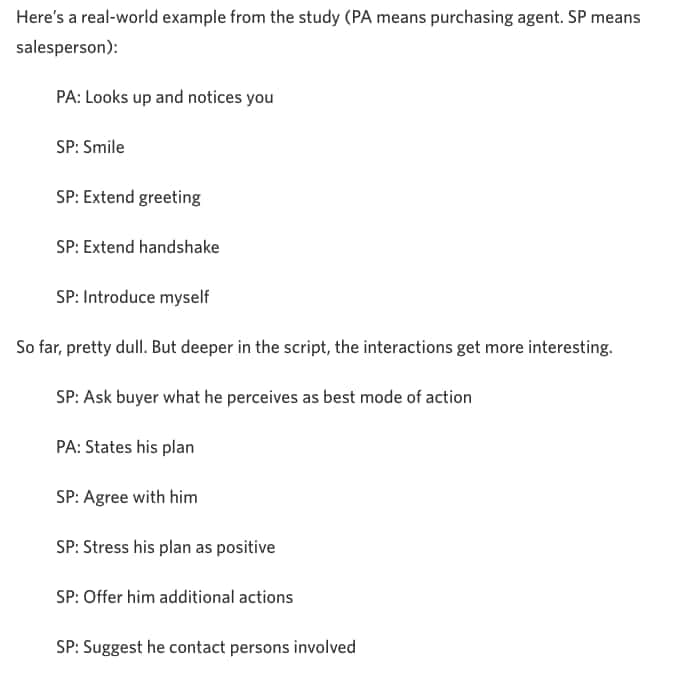
The key is to note every little cue, including mundane ones. Once you’ve gathered several cognitive sales scripts from top performers and under-performers, a simple comparative analysis can help you discover hidden patterns.
Here are a few examples.
If you agree with your lead, does this lead to a better conversion rate? Is there a common pattern of non-verbal cues in your winning sales pitches? How much silence is too much? Are there specific words that boost conversions?
This wealth of data can also be incorporated into your sales training. Role-playing activities based on these patterns can help under-performers catch up.
That’s it, folks! If you follow these steps, you’re ready to create some powerful sales scripts.
Read also: Find The Best Time to Cold Call: Optimal Hours & Other Tips
12 Sales Scripts To Close More Deals
Here are 12 sales scripts for everyday tasks in a salesperson’s life. Feel free to copy, personalize, and use them when it is appropriate.
1. When you’re introducing the company and products on a cold call
The introductory cold call can be more challenging than reaching out to an old lead. This outreach call lays the first step to guiding a lead down the sales funnel.
At this stage, a good impression can go a long way. So, show respect for your client’s time. Grab their attention without being aggressive. Here’s an example.
“Good morning, [lead name]! I’m [agent name] from [company name]. We at [company name] help SMBs enhance their social media content and scale quickly. After looking through your content on LinkedIn — which is very impactful — I have a couple of ideas to help improve your reach. Would have a minute to chat about this?”
If they say no: “When would be a good time to reach out to you?”
If they say yes: “First, [insert strategy based on research]. This would help you [add value proposition]. Is this something you’ve struggled with this year?”
Ask more open-ended questions about pain points.
Ending the call: “I’d love to send an email with all the ideas we’ve covered. You’ll get my contact info and an option to schedule a demo with my team. Could I ask you for your email address?”
If they say yes: “Amazing! Thanks so much for your time, despite your busy schedule. Have a great day!”
Here’s an example of a cold outreach email for a similar situation. Both are equally effective, so we wanted to leave you with one more option 👇
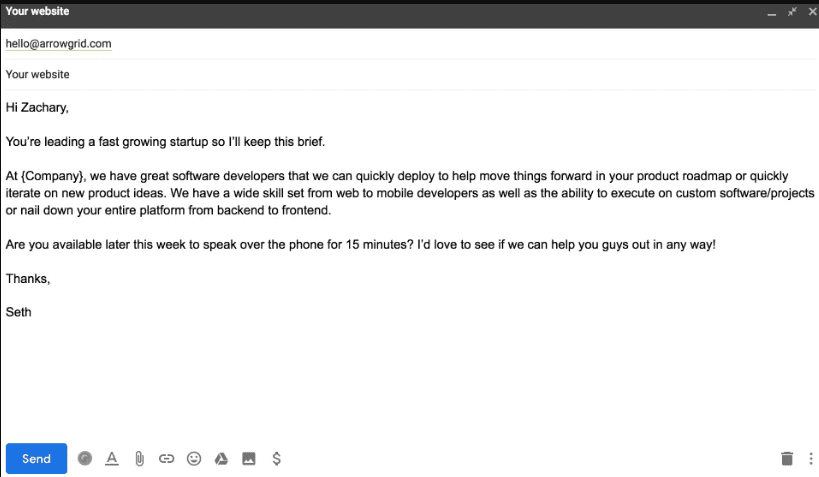
2. When you want to move past a gatekeeper
Working around a gatekeeper is an under-appreciated art. A gatekeeper is a point of contact at a company whose goal is to filter out poor deals before it reaches a real decision-maker in the company.

Begin by treating this gatekeeper as an ally rather than an obstacle. Your goal here is to convince them about your value proposition. The gatekeeper needs to see that you bring a genuine value proposition to the table. They need to be sure you won’t waste their time.
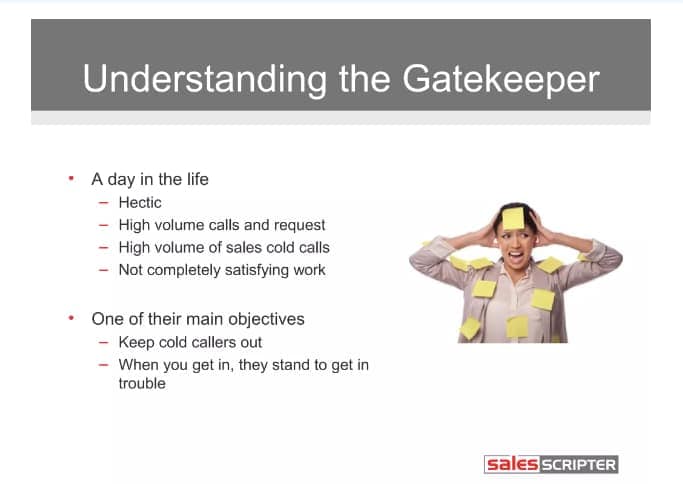
Here’s how you could begin. Remember that you’ll see more objections raised by a gatekeeper. Don’t blame them; it’s just their job. So, be mentally prepared to handle this before starting your call.
“Hello [gatekeeper name]. I’m [agent name] from [company name]. Thanks for connecting with me again!”
Gatekeeper: “Okay, what is this call about?”
Sales rep: “Since our last call, we’ve run some analytics on your company website. My team is confident that we can lower your website bounce rate by 20-35% in the first quarter. I’d also like to connect with [decision maker name] over this. Is there a way you could make this happen?”
Gatekeeper: “Oh, they don’t take sales calls.”
Sales rep: “I completely understand. At this stage, we’re just trying to see if your company would be a good fit for us. That’s why I wanted to talk to [decision maker] to understand your company’s needs better.”
If they say no: Ask for a follow-up call or email.
If they say yes: “Sure, that’s great! Looking forward to it.”
3. When you’re running a promotional campaign or offering discounts
In this scenario, you’ve already connected with this lead before. You now want to offer them a limited-time discount after warming the prospect for some time. You can also re-purpose this template for a personalized offer.
“Hello! This is [agent name] from [company name]. We spoke last on [date] when you [purchased our product/showed interest in our product].
I’m calling to let you know that we’ve launched [a seasonal sale]. I wanted to give you a chance to benefit from it before we roll it to other prospects through our website and newsletter. For the next two weeks, you can get the [product name] solution for 50% off the price. Do you have a moment to chat about this?”
If they say no: “Sure! Our offer is only valid till the 31st, though. So would there be a better time to connect?”
If they say yes: “Thanks for your time!” [Highlight value proposition and explain how your product can help in achieving their goals]. Then say: “But, I get that you’d need more time to decide. So, I’ll just email you all the points we’ve covered. You can just click on the link to purchase the product.”
4. When you want to follow up with a lead
Use this sales script when you want to follow up with a lead. Perhaps they were busy and asked you to call back. Or, you could have missed their call.
If you’re the one who missed a lead’s call, begin by apologizing for missing the call. Re-affirm your interest in working with them.
Note that your prospect is already familiar with your company at this stage. If your call is scheduled, send them an email reminder with an option to reschedule. This will help you avoid catching them at the wrong time.
Here’s how you could begin this call.
“Hello [prospect name]. I’m [agent name] from [company name]. We spoke on [day/date], and I’m reaching out about our product [product name], as requested. Is it still a good time to talk?”
If they say no: Reschedule the call
If they say yes: “I’m sure you can recall that my company helps [role/designation] like you achieve [result]. Do you have any concerns regarding our platform or any worries about implementation for your company?”
If they say no: State your value proposition and begin addressing pain points.
If they say yes: “Ah, yes! Many of our clients have similar concerns. Here’s how we help them” [talk about your solution]
Ask more questions about their concerns and pain points.
Ending the call: “Thanks for your time, [prospect name]. If you or your team have any further questions, I’ll be happy to address them to help you find the best resolution. I’m looking forward to hearing from you soon. Have a great day ahead!”
Here’s an example of an outreach email template for the same situation.
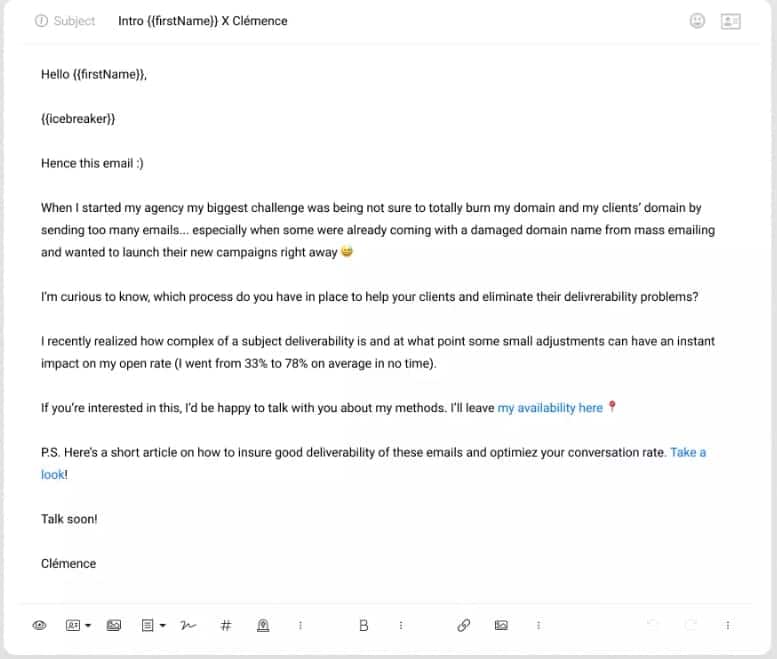
5. When you’re scheduling an appointment or a demo
Treat each prospect with extra care once you’ve reached this sales funnel stage. When your prospect has an excellent customer experience with you, they’re likely to convert.
So, if you thought an appointment scheduling call wasn’t that big a deal, you’d be wrong. Here’s a template for you. Start by introducing yourself and your company first.
“Hello [prospect name]. Would you have a minute to talk about your experience with the free version of [product name]? I’d love to hear your thoughts on it.”
If they say no: “Sure, could I reconnect with you at a better time?”
If they say yes: “Thank you! What did you love/dislike about the product?”
Let them share their experience. Then say, “Thanks so much! You mentioned that [talk about the customer’s pain point]. The good news is, we’ll be able to help with this issue. And, I’d also like to recommend a couple of other features that I think you’ll find very helpful. Would you have time this week for a 30-minute demo call? It’s entirely free, of course.”
Here’s a great email example from Reddit’s marketing team. It’s a no-nonsense way to get more prospects into your demo room.
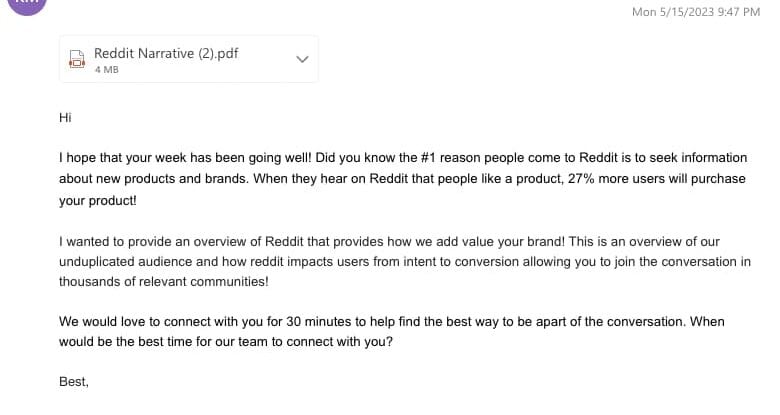
6. When you need to follow up on a missed appointment
What if a prospect ends up ghosting you and misses an appointment? It’s a fairly common scenario. When talking to your no-show prospects, your goal is to reschedule and get the deal back on track.
If a prospect doesn’t show up multiple times, be realistic and move on. Especially if they’ve missed an appointment three or more times, it’s a clear indication that they lack interest. In this scenario, use this sales script.
“Hello [prospect name]. I hope you’re well. We had scheduled a demo on [date and time]. We’ve already rescheduled this meeting x times. I understand how busy you might be at the moment too. Would it be better to shelve this conversation for now? We can always reconnect when it’s a good time for you.”
This way, you get a straight answer from your prospect. If they’re interested, they’ll let you know that they’d like to reschedule.
Remember to have a friendly and even tone, even if you don’t feel that way deep down. After all, you won’t achieve your goals by guilt-tripping prospects. Here’s a sales call template for following up after one missed appointment.
“Hello [prospect name]. Is this a good time for a super-quick chat? I’m [agent name] from [company name]. It won’t take more than 60 seconds.”
Proceed if they say yes.
“So, it appears we had an appointment yesterday at [time] for a 30-minute demo. We were sorry to have missed you, but I understand how busy your schedule can get. Would you like to reschedule it for a more convenient time?”
7. When a mutual contact has referred a friend or colleague
You’re starting on the right foot when you get a new lead through a referral. The prospect is likely to trust you if someone they respect has recommended you.
Talking about your mutual contact is a great icebreaker. What’s more, you’re starting the conversation with the knowledge that they’re looking for solutions you have. Here’s how you can ace this call.
Sales rep: “Hello! Is this [prospect name]?”
Prospect: “Yes. What is this about?”
Sales rep [Option A]: “Well, I’m [agent name] from [company name]. We haven’t had a chance to meet yet, but [mutual contact’s name] suggested I reach out to you.
I worked with [mutual contact] to implement a new CRM system and they suggested you might be looking for something similar. Is this true?”
OR
Sales rep [Option B]: “I recently spoke to [mutual contact’s name] regarding implementing a new CRM system. Are you looking to implement a similar system at your company?
I wanted to touch base to find out more about your needs and how we might work together. Are you struggling with [pain point]?”
8. When reaching out to an old lead after a long time
We aren’t in touch with every lead all the time. There will be ebbs and flows in this process. In this scenario, you haven’t contacted this lead in a few months.
However, you want to contact them to tell them about an offer. Or it could be any other reason, like explaining your new features or new updates. Here’s an easy sales script template for this situation.
“Hello [prospect name]! I’m [agent name] from [company name]. You and I haven’t spoken in a while and I want to make an offer. Do you have a minute to spare?”
If they say no: Try to reschedule
If they say yes: “Thank you! As you know, we help [designation/persona] like you create superior product experiences. Would you like me to create a product experience for [product name/company name]? I will put together a proof of concept for you to evaluate, no strings attached.”
But what if they can’t take your call? How do you say the same thing in an email? According to the Head of Acquisitions at Prospect.io, the following is a stand-out email template for getting leads to book a demo.
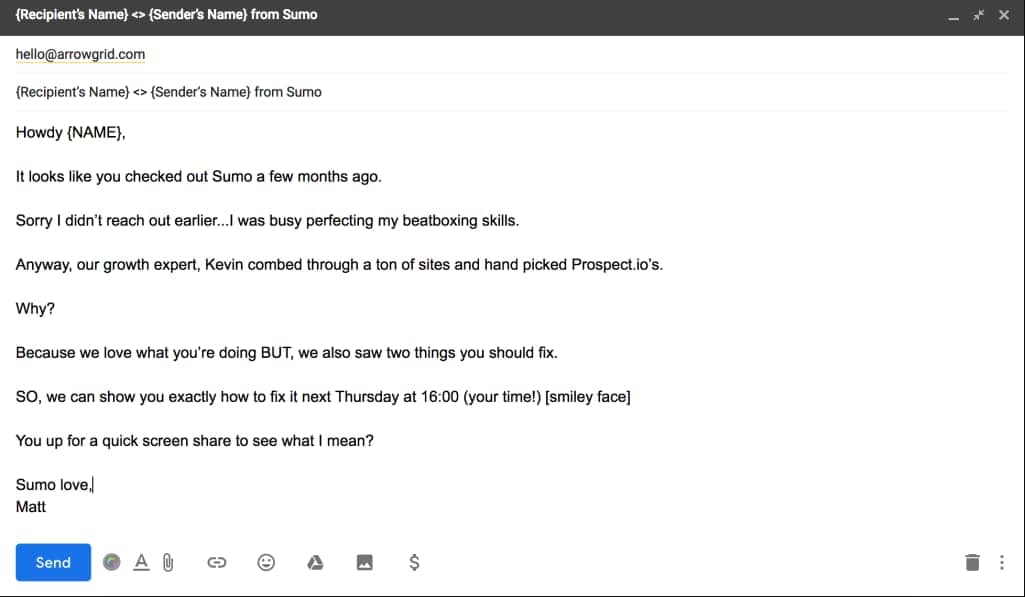
9. When you want to ask for a referral
Referrals are one of the most cost-effective ways to generate new leads. However, we don’t recommend requesting referrals from just any client.
A happy client is the best brand ambassador. And people trust what their friends and family have to say way more than salespeople, anyway. Here’s how you could ask for a quick referral.
“Hello [customer name]. I’m [agent name] calling from [company name]. I’m hoping you have a second to talk about your experience with [product name]. I promise it won’t take long.
So, on a scale of 1-10, how satisfied are you with our product?”
Proceed only if the customer gives a rating of 8 or above.
“Thank you! It made my day to know that you’re finding value in our product. Your satisfaction means a lot to us.
We’ve recently launched a referral program. When you refer a friend or colleague, you get [specify rewards]. And, your referral gets [specify reward].
We’re trying to create more win-win situations for our loyal customers. Do you have anyone in mind who could also benefit from our product?”
If they say no: Ask them if you can send them an email. They can simply click the button to refer someone in the future if they change their mind.
If they say yes: “That’s wonderful! If it’s okay with you, do you mind giving me their contact information so that I can speak to them?”
10. When your goal is to target a specific role in a company
Now, each team in your company has a different set of pain points and goals. Sure, these goals do tie in with your overall company goals. But let’s not pretend that every role will be interested in what you’re selling unless you can sell it from their point of view.
For example, marketers typically work on generating leads at the top of the funnel. The sales team aims to convert the maximum number of sales-qualified leads they get from the marketing team.
Here’s how to pitch your call when you want to appeal to one specific role.
“Hello [prospect name]. I’m [agent name] from [company name]. I’m calling to give you early access to our new content analytics add-on tool.
As a content manager, it can get tricky to balance creative freedom with strategic alignment and measuring the right KPIs. This AI-powered analytics tool will help you do just this. Is this something you would be interested in?”
11. When your follow-up call goes to voicemail
At times, your calls could to voicemail if the prospect isn’t available to take your call. Does this mean you abandon your call and try again another day? No.
Leaving a brief voicemail message is a great opportunity to take the deal forward. And it’s one you know you shouldn’t ignore.
“Hello, [prospect name]. I’m [agent name] calling on behalf of [company name]. We spoke last on [day/date] about how our [specify product niche] could help your company [generate a result]. I’d love to connect with you to know more about your needs.
When you get the time, you can always ring me at [phone number]. Talk to you soon, and have a great day!”
12. When you need a personalized opener to connect with a lead
Researching your lead can help you create a hyper-personalized opener that speaks directly to your prospect’s experiences.
A small dive into your prospect’s LinkedIn account can give you insight into your opening line. Begin by introducing yourself and your company as usual. Then, choose from some of these personalized openers.
1. “Hello [prospect name]. I’m calling because I recently had the chance to help [competitor name 1] and [competitor name 2] with [resolving a particular pain point]. We achieved [specify a result]. Is this something you’d also like to resolve?”
2. “Hello [prospect name]. I recently had a chance to watch a [webinar, video, reel] that you hosted/created about [topic]. I loved it. Do you have a moment to chat about how we might work together to improve your reach?”
3. “Hello [prospect name]. I saw on your LinkedIn that you went to [university name]. We recently worked with [mutual contact’s name] from the batch of [insert year], and they pointed me to your profile. Do you have a minute to chat about your current role and how our [mention product niche] can help you?”
That’s a wrap on our sales scripts you can use. Remember to personalize each one before using it. And remain conversational. The key is to take the customer through your conversation as if you’re thinking of all this for the first time.
Read also: A Productive Sales Meeting in 30 Minutes? Here’s How!
3 Best Practices To Nail Every Sales Call
There are so many aspects to consider before every sales call. You’ve got to polish up your language, personalize the message, and handle several objections. Here are just three best practices you can follow to make it easier on you.
1. Practice active listening and be prepared to handle objections
Zig Ziglar once said, “You will get all you want in life if you help other people get what they want.” This is true for both sales and life.
To give prospects what they want, you need to be able to listen actively. You already do this, even if you’re not sure you do 😅
Here’s how you can improve your active listening skills.
- Maintaining eye contact, but not too much
- Being aware of your body language and facial cues
- Repeat or rephrase what the prospect said to show understanding
- Asking enough questions to clarify
- Avoid interrupting the prospect
- Be fully present and give them your full attention
- Avoid mentally rehearsing your next line when they speak
As with any valuable skill, active listening skills can be improved over time.
2. Focus on developing your relationship with the lead and less on
selling
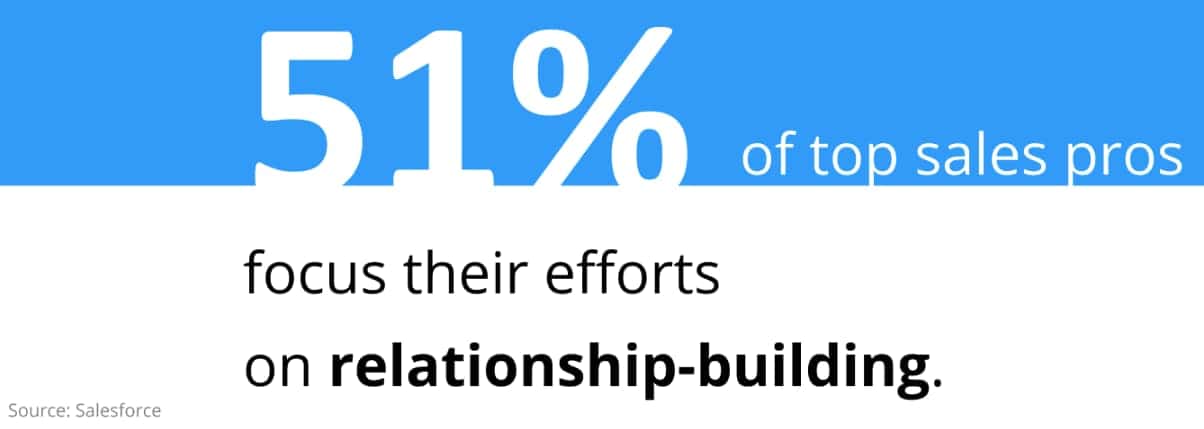
We’re not suggesting this idea without evidence to back it up. A recent study on behavioral marketing conclusively proved one fundamental difference between the approach of a high-performer and an under-performer.
What was this one differentiator?
They found that high-performing sales reps first work to establish trust with their prospect before anything else. Sales reps who invested time to find out more information about their prospects before reciprocating with their own information performed better. This ties in with the Salesforce study above.
On the other hand, they noticed that most underperforming sales reps led with information about themselves. So, avoid this mistake at all costs.
3. Remain flexible and improvise when necessary
Selling is an emotional and intellectual enterprise. If you sound robotic, nobody is going to be interested. Trust me.
People want and crave authenticity. Think of your favorite actor. Do they sound like they’re reading a script? Or do they make their lines look spontaneous and natural?

At the same time, you don’t want to appear desperate or push the prospect too hard. So, practice your scripts in front of a mirror, as any actor would. We can’t all be Oscar winners, but we can close more deals!
Then, have your talking points ready, but stick loosely to your script. If the situation calls for it, feel free to ditch the script, but don’t forget your talking points!
Sometimes, an improvised one-liner can end up working wonders more than any sales script could. This is better than ignoring your prospect’s concerns to stick to your script.
👉🏻 Try this free CRM solution and see how efficient your sales process can be
Wrap Up
On average, a salesperson makes over 33 cold calls every day! And the average salesperson generates one appointment after 209 cold calls. Hats off to your persistence and determination.
We hope these sales scripts make your life easier. If you think we missed out on something, let us know in the comments. If you liked this article, share it with colleagues and friends 🙂

